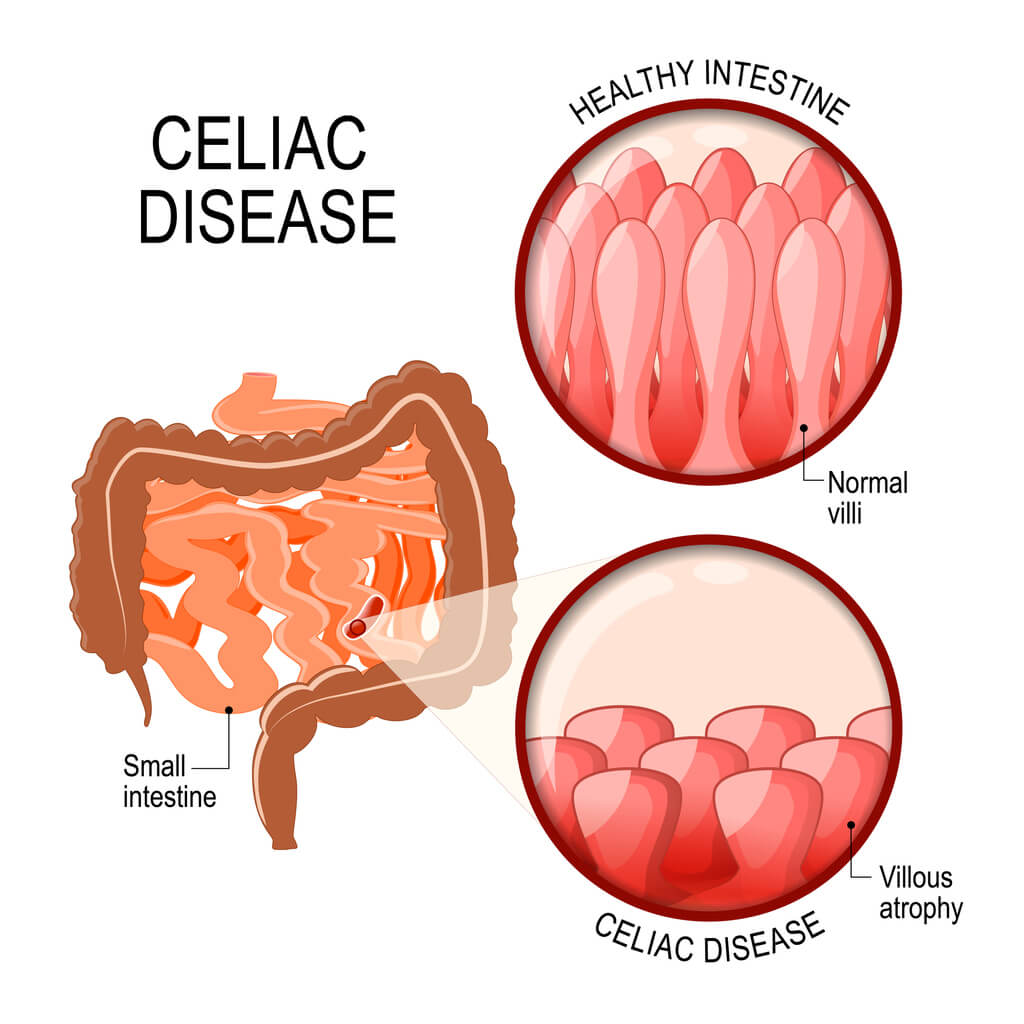Imagine this scenario: Your child has been experiencing digestive issues and fatigue for quite some time now, and despite numerous medical consultations, the cause remains unknown. In this article, we will shed light on a commonly overlooked condition called Celiac Disease, specifically focusing on its occurrence in children. By understanding the symptoms, diagnosis process, and potential treatment options, you will be equipped with valuable knowledge to help your little one on their journey towards a healthier and happier life.

What is Celiac Disease?
Definition
Celiac disease, also known as celiac sprue, is a chronic autoimmune disorder that affects the small intestine. It is triggered by the consumption of gluten, a protein found in wheat, barley, and rye. When individuals with celiac disease consume gluten, their immune system responds by attacking the small intestine, damaging the lining and preventing the absorption of vital nutrients.
Prevalence
Celiac disease is a common condition, affecting individuals worldwide. Studies have shown that approximately 1 in 100 people are affected by celiac disease, making it one of the most prevalent autoimmune disorders. It can occur at any age, from infancy to adulthood, and can be diagnosed in both males and females.
Causes
The exact cause of celiac disease is not yet fully understood. However, it is known to have a strong genetic component. Individuals who have certain genes, such as the HLA-DQ2 and HLA-DQ8 genes, are at a higher risk of developing celiac disease. It is believed that environmental factors, such as the introduction of gluten into the diet, can trigger the development of the disease in those who are genetically predisposed.
Symptoms and Diagnosis
Common Symptoms
Celiac disease can present with a wide range of symptoms, which can vary greatly between individuals. Common symptoms in children include abdominal pain, diarrhea, bloating, weight loss, and fatigue. Other less specific symptoms can include irritability, irritability, and poor growth. It is important to note that some individuals may experience little to no symptoms, making diagnosis more challenging.
Diagnosis Process
Diagnosing celiac disease involves a combination of physical examination, medical history review, serological tests, and intestinal biopsy. Blood tests are typically conducted to measure the levels of certain antibodies that are commonly elevated in individuals with celiac disease. If these tests indicate a potential problem, an intestinal biopsy is usually performed to confirm the diagnosis. During the biopsy, small tissue samples are taken from the small intestine and examined under a microscope for characteristic changes.
Importance of Early Diagnosis
Early diagnosis of celiac disease is crucial to prevent the onset of complications and to promote optimal growth and development in children. Without a proper diagnosis and treatment, children with celiac disease may experience nutritional deficiencies, delayed puberty, and impaired height and weight gain. It is therefore essential to seek medical attention if you suspect your child may have celiac disease.

Risk Factors
Genetics
Genetics play a significant role in the development of celiac disease. If you have a close family member with celiac disease, such as a parent or sibling, your risk of developing the condition is increased. Having specific genetic markers, such as the HLA-DQ2 and HLA-DQ8 genes, also increases your susceptibility to celiac disease.
Family History
A family history of celiac disease can greatly increase the likelihood of developing the condition. If you have a first-degree relative (parent, sibling, or child) who has been diagnosed with celiac disease, it is recommended to get tested, even if you do not currently exhibit any symptoms.
Other Autoimmune Disorders
Having another autoimmune disorder, such as type 1 diabetes or autoimmune thyroid disease, can increase the risk of developing celiac disease. Autoimmune disorders occur when the immune system mistakenly attacks the body’s own tissues and organs. The presence of one autoimmune disorder indicates an increased risk for others.
Effects on Growth and Development
Nutritional Deficiencies
Celiac disease can lead to nutrient malabsorption, resulting in various nutritional deficiencies. The damaged intestinal lining is unable to absorb essential vitamins and minerals, such as iron, calcium, and folate. This can cause anemia, osteoporosis, and impaired bone development in children.
Delayed Puberty
In some cases, celiac disease can delay the onset of puberty in both girls and boys. The exact mechanism behind this delay is not yet fully understood, but it is believed to be related to the malnutrition resulting from the intestinal damage caused by gluten consumption.
Effect on Height and Weight
Children with untreated celiac disease may experience stunted growth and inadequate weight gain. This is often due to the impaired absorption of nutrients, resulting in malnutrition. However, once a gluten-free diet is implemented and the small intestine heals, growth and weight gain can catch up to normal levels.

Dietary Management
Gluten-Free Diet
The primary treatment for celiac disease is strict adherence to a gluten-free diet. This means eliminating all sources of gluten from your child’s diet, including wheat, barley, rye, and cross-contaminated products. It is important to read food labels carefully and to be aware of hidden sources of gluten in processed foods, medications, and personal care products.
Role of a Dietitian
A registered dietitian who specializes in celiac disease can play a crucial role in managing your child’s dietary needs. They can provide personalized guidance on meal planning, label reading, and navigating social situations involving food. A dietitian can also help identify alternative gluten-free ingredients and ensure that your child’s nutritional needs are being met.
Common Challenges
Adhering to a gluten-free diet can present various challenges for children with celiac disease and their families. These challenges include adjusting to new dietary habits, dealing with social and peer pressures, and finding suitable gluten-free alternatives. It is important to provide education and support to help children and their families overcome these challenges and maintain a healthy gluten-free lifestyle.
Educational Support
School Accommodations
Children with celiac disease may require certain accommodations at school to ensure their safety and well-being. This can include providing gluten-free meal options in the cafeteria, implementing policies to prevent cross-contamination, and educating teachers and staff about the specific needs of children with celiac disease.
Peer Education
Peer education can be a valuable tool in raising awareness and promoting inclusivity for children with celiac disease. By educating classmates and friends about the condition, children with celiac disease can feel more supported and reduce the risk of social isolation. This can help foster a positive and inclusive school environment.
Building Awareness
Building awareness about celiac disease within the broader community is essential for promoting understanding and acceptance. This can be done through educational campaigns, community events, and collaborations with local organizations. Increasing awareness can help create a more supportive environment for individuals with celiac disease and their families.

Psychological Impact
Emotional Challenges
Living with a chronic condition like celiac disease can pose emotional challenges for children. They may feel different, isolated, or frustrated by the dietary restrictions. It is essential to provide emotional support, encourage open communication, and help children develop healthy coping strategies to navigate these challenges.
Mental Health Support
Children with celiac disease may be at a higher risk of developing mental health conditions, such as anxiety or depression. It is important to monitor their mental well-being and provide appropriate support. This may include counseling, therapy, or involvement in support groups where they can connect with others who share similar experiences.
Impact on Quality of Life
Celiac disease can significantly impact a child’s quality of life if not properly managed. By addressing the dietary, educational, and psychological aspects of the condition, it is possible to improve quality of life for children with celiac disease. With appropriate support and treatment, children can lead happy, healthy lives.
Complications and Associated Conditions
Dermatitis Herpetiformis
Dermatitis herpetiformis is a skin condition that is closely linked to celiac disease. It is characterized by itchy, blistering skin lesions that typically occur on the elbows, knees, buttocks, and scalp. Dermatitis herpetiformis is caused by the same immune response to gluten as celiac disease and requires adherence to a gluten-free diet for management.
Refractory Celiac Disease
Refractory celiac disease is a rare but serious complication of celiac disease. It occurs when the small intestine fails to heal despite adherence to a strict gluten-free diet. Refractory celiac disease requires specialized medical management and monitoring to prevent further complications.
Type 1 Diabetes
There is a strong association between celiac disease and type 1 diabetes. The autoimmune mechanisms that underlie both conditions are believed to be interconnected. It is recommended that individuals with type 1 diabetes undergo testing for celiac disease, as the two conditions often coexist.

Long-Term Outlook
Management and Monitoring
The long-term management of celiac disease involves strict adherence to a gluten-free diet. Regular check-ups with healthcare providers are important to monitor growth, assess nutrient levels, and ensure compliance with the gluten-free diet. Periodically, blood tests and intestinal biopsies may be conducted to evaluate the healing of the small intestine.
Transition to Adulthood
As children with celiac disease transition to adulthood, they may face new challenges in managing their condition independently. It is important to provide resources and support to help them navigate the adult healthcare system, understand the importance of ongoing monitoring, and maintain a gluten-free lifestyle.
Future Research
Ongoing research is focused on better understanding the genetic and environmental factors that contribute to the development of celiac disease. Advances in diagnostic tools, treatment options, and potential vaccines are also areas of active investigation. The ultimate goal is to improve the quality of life for individuals with celiac disease and develop strategies for prevention and management.
Support Groups and Resources
National Celiac Associations
Many countries have national celiac associations that provide support, education, and resources to individuals with celiac disease and their families. These associations often organize events, provide information on gluten-free products, and advocate for the rights and well-being of individuals with celiac disease.
Online Forums and Communities
Online forums and communities can be valuable sources of support and information for individuals and families affected by celiac disease. These platforms provide opportunities to connect with others, share experiences, ask questions, and access tips and resources related to living gluten-free.
Cookbooks and Recipes
Numerous cookbooks and recipe resources are available specifically tailored to individuals following a gluten-free diet. These resources provide creative and delicious alternatives for gluten-containing foods, making it easier to adapt to a gluten-free lifestyle. They often include nutritional information and helpful cooking tips to ensure a well-balanced diet.
In conclusion, celiac disease is a chronic autoimmune disorder that can significantly impact the lives of children. Early diagnosis, adoption of a strict gluten-free diet, and comprehensive care are essential to manage the disease and promote optimal growth, development, and quality of life. By raising awareness, fostering support networks, and providing educational resources, we can create a more inclusive and supportive environment for children with celiac disease and their families.